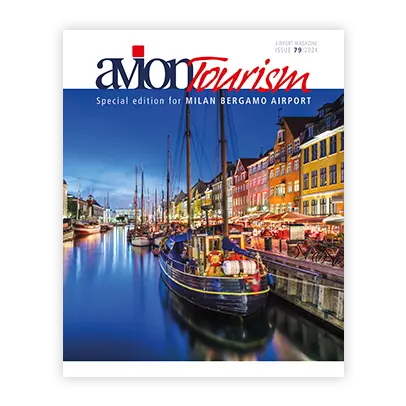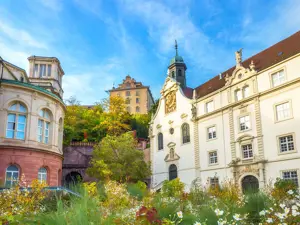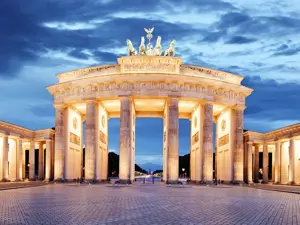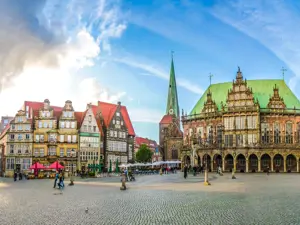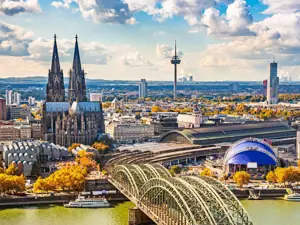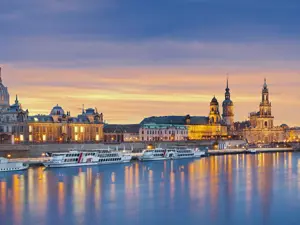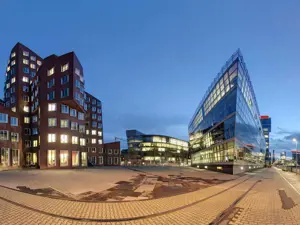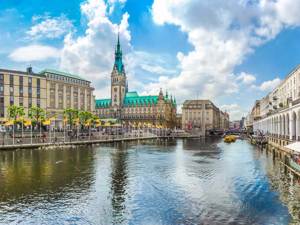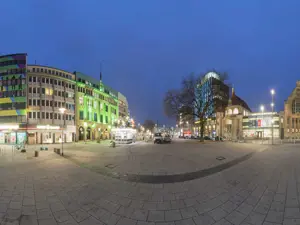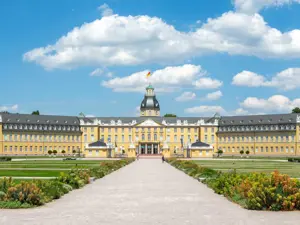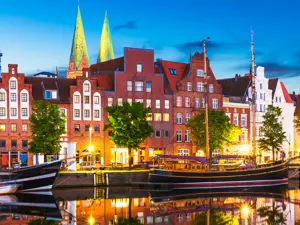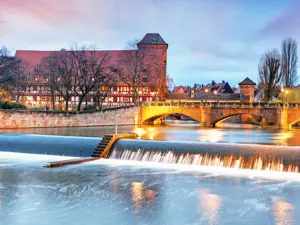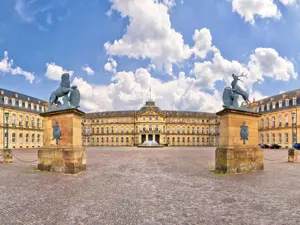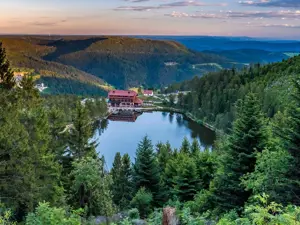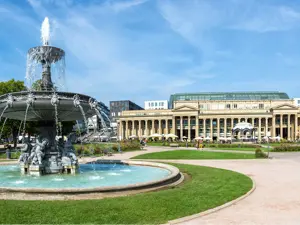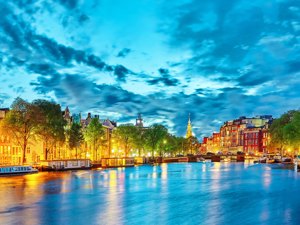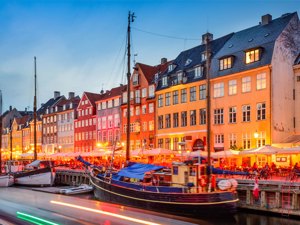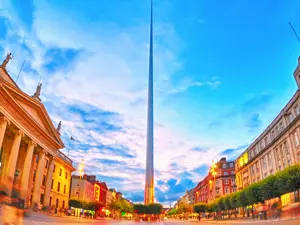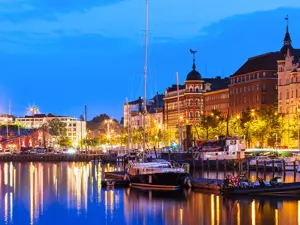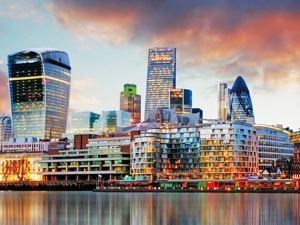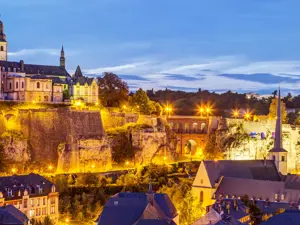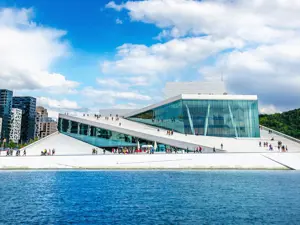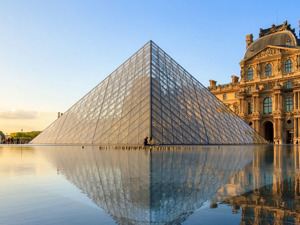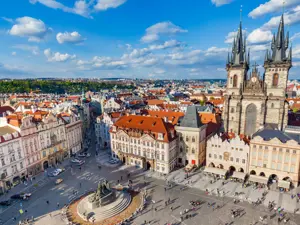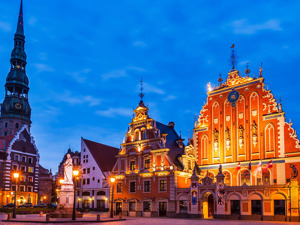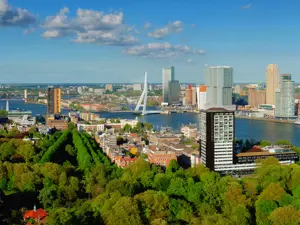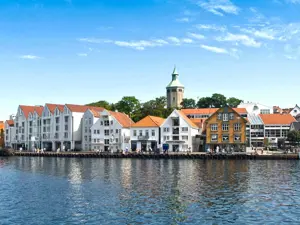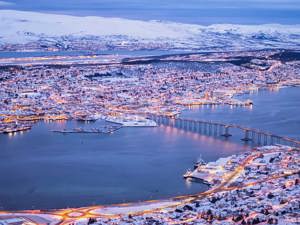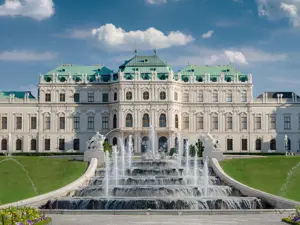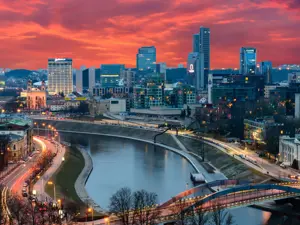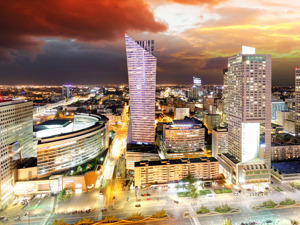The vibrant German city, amidst historical treasures and contemporary atmosphere
Hanover (spelt "Hannover" in German) is a hub of artistic, historical, and cultural excellence, always lively and stimulating. Known as the capital of Lower Saxony, it is renowned as the birthplace of the genius Gottfried Wilhelm Leibniz and has been designated a "UNESCO City of Music" for its creative music scene spanning various genres including pop, rock, jazz, classical, and contemporary. Hanover is the city where vinyl was invented, the first music cassette was produced, and the first CD was printed.
The city is beloved for its various attractions such as the famous Royal Gardens of Herrenhausen, the Adventure Zoo, legendary festivals like the one at Lake Maschsee, sports events or opera and drama performances, museums, and a lively nightlife, along with endless shopping opportunities.
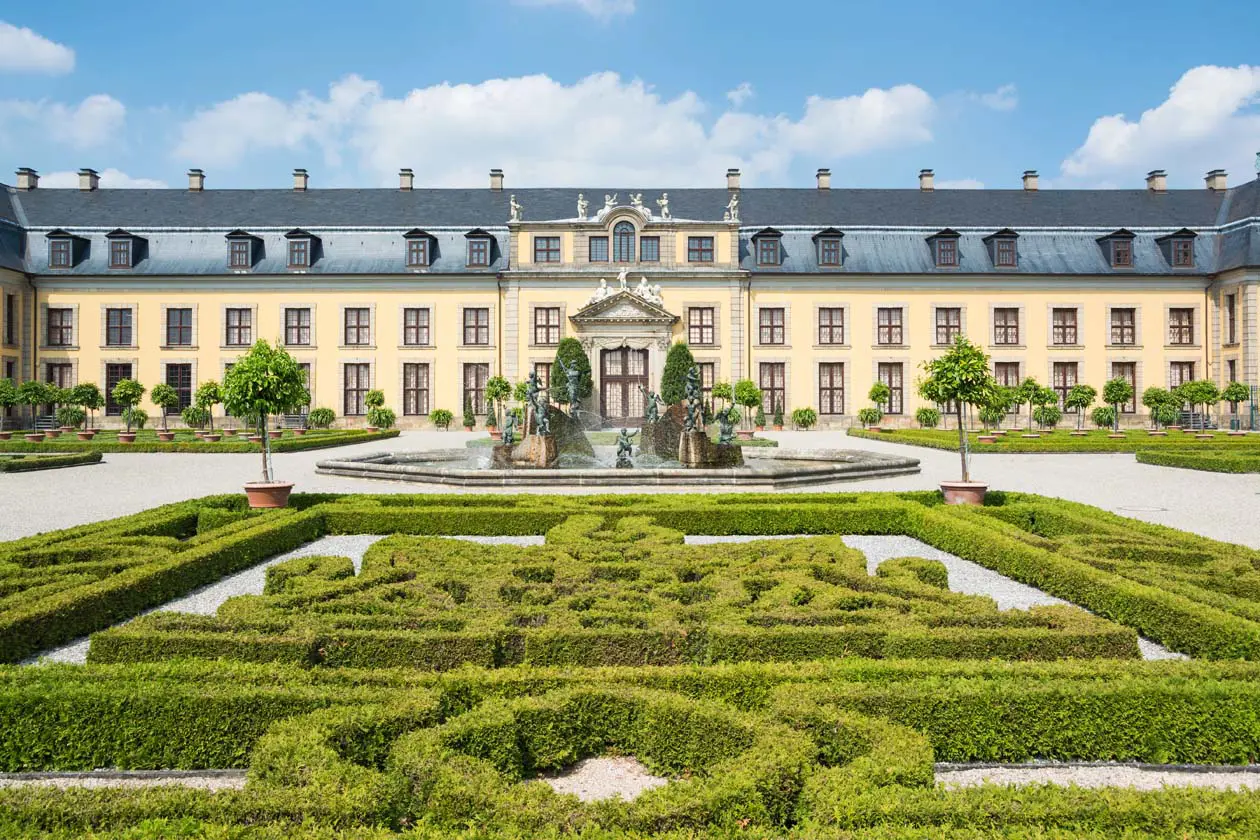
Royal Gardens of Herrenhausen, Hanover. Photo: Copyright © Sisterscom / Depositphotos
To begin exploring, one can start from the historic center of Hanover, characterized by typical half-timbered houses from the Medieval era, traversing streets like Knochenhauerstrasse, Kramerstrasse, and Burgstrasse connected by alleys reuniting at ancient gates. In the upper section of Burgstrasse stands the oldest half-timbered house with a Renaissance façade dating back to 1566 and an even older rear section.
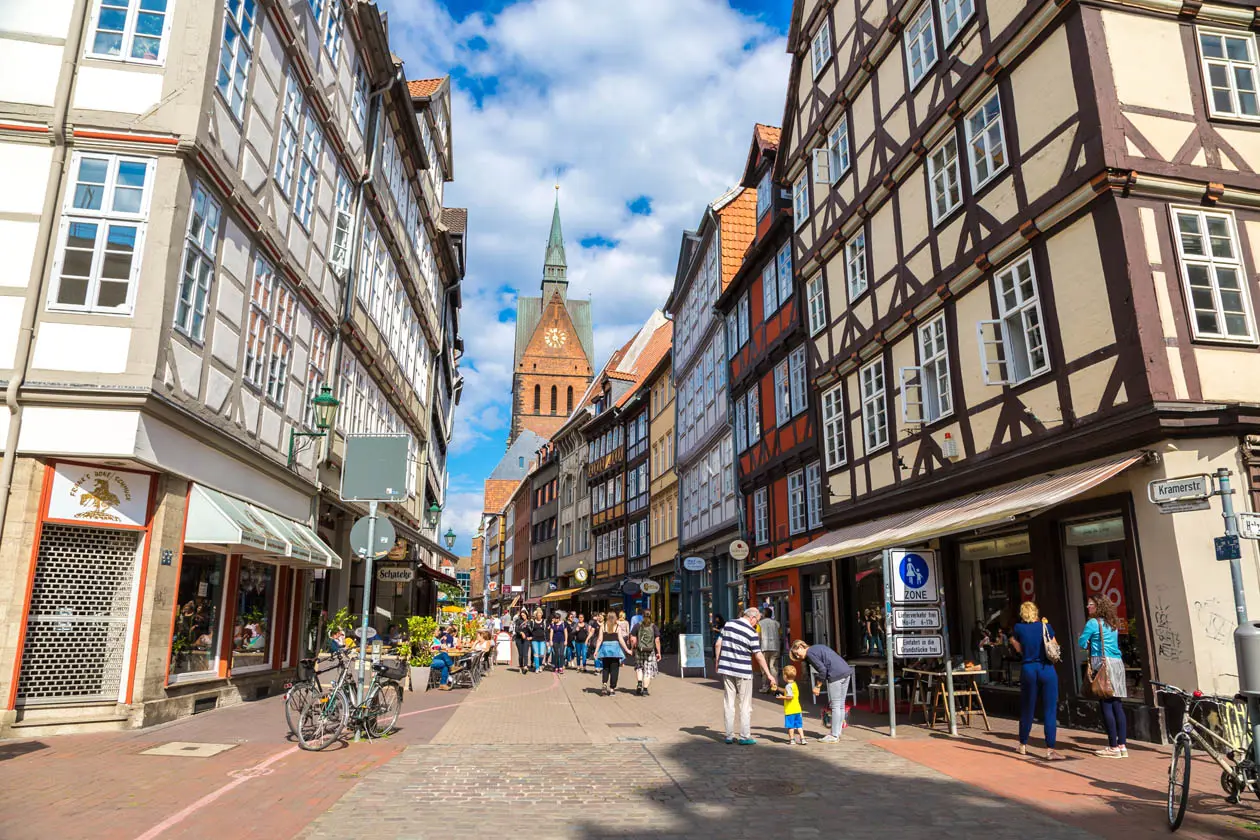
Historic center of Hanover Photo: Copyright © Sisterscom / Depositphotos
Near Burgstrasse, one can also admire the Kreuzkirche Church, Hanover's oldest, built in 1333 with an altar designed by Lucas Cranach the Elder, originally from a church in Einbeck. Continuing down Kreuzstrasse leads to Ballhofplatz Square, and at the City Museum, one finds Leibniz's House ("Leibnizhaus"), inhabited by the famous philosopher Gottfried Wilhelm Leibniz starting from 1676, later rebuilt. Moving on to Ballhofplatz, a cozy square branching into alleyways with cafes, restaurants, or shops, where summer festivals take place.
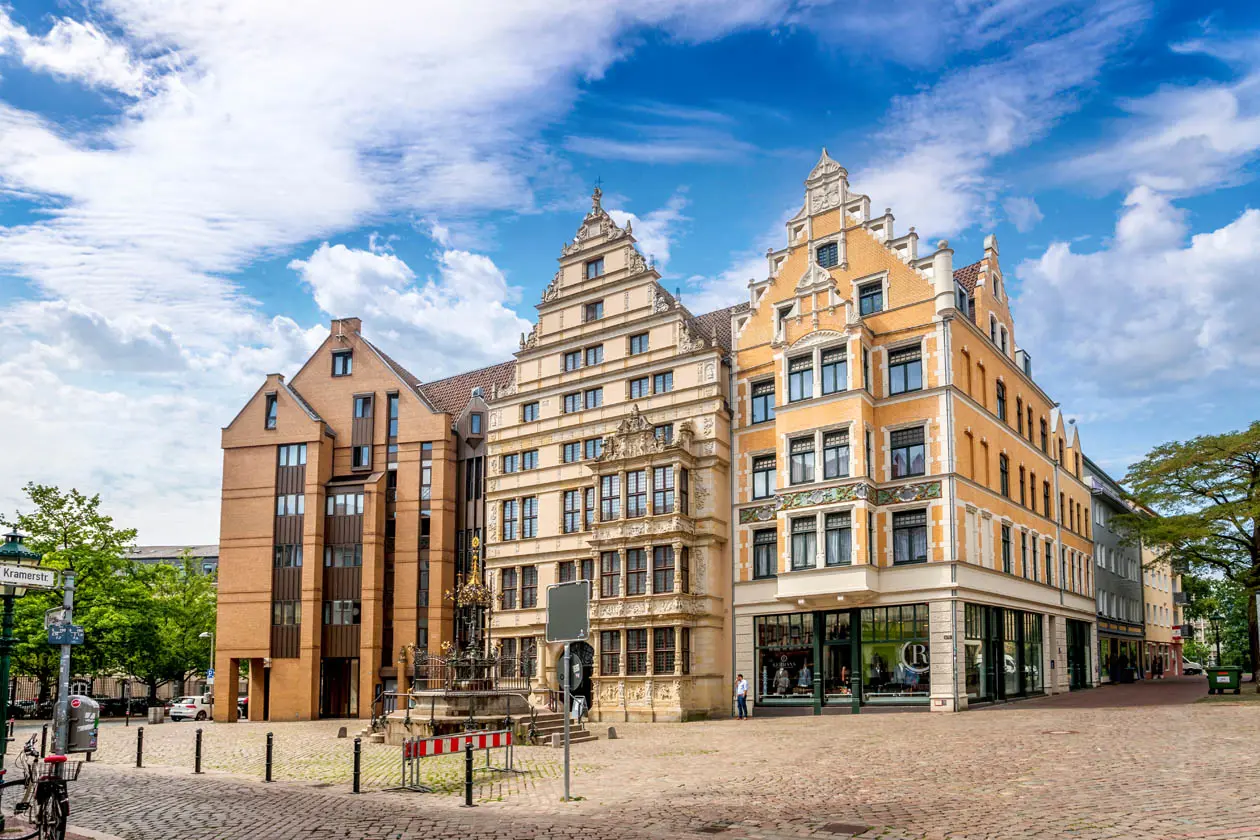
"Leibnizhaus", Hanover. Photo: Copyright © Sisterscom / Depositphotos
Another church to visit in Hanover's old town is Marktkirche, built in the 14th century in Baltic Gothic style, where the famous "Deutscher Michel", Johann Michael von Obentraut, who led the German-Danish army against General Tilly during the Thirty Years' War, is buried.
Adjacent to Marktkirche stands a medieval building from the 1500s housing the Old Town Hall, with the oldest part from 1410 on Schmiedestrasse (Smiths' Street) and the adjacent wing on Koebelingerstrasse (the Pharmacists' Wing, once the location of the ancient municipal pharmacy). Architect Conrad Wilhelm Hase saved the building from demolition in 1844 and oversaw its restoration in a 16th-century style with Gothic-style pediments.
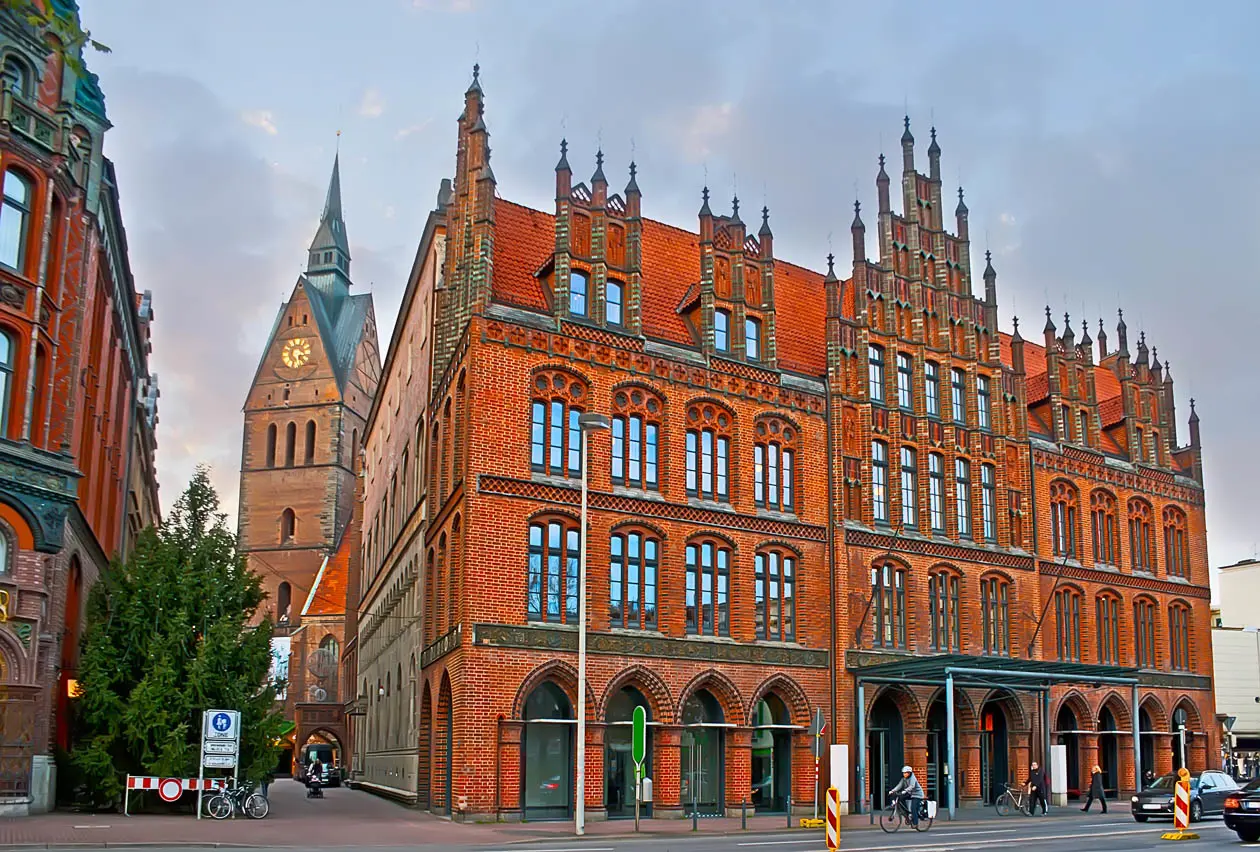
The Old Town Hall of Hanover. Photo: Copyright © Sisterscom / Depositphotos
Facing the Old Town Hall is the Markthalle, a traditional covered market known as "Hannover's belly" offering culinary specialties, perfect for a gastronomic break. Nearby stands the New Town Hall, erected in 1913, serving as the residence of Hanover's mayor. The building boasts impressive dimensions and architectural style, constructed with 6026 beechwood piles, designed by architects Eggert and Halmhuber. Inside, visitors can admire various sculptures, frescoed halls, or mosaic-adorned rooms. Furthermore, ascending the 97.73-meter-high dome offers a panoramic view of the entire city, with the Harz Mountains visible in the distance. The town hall also hosts events and the Gartensaal restaurant overlooking a small lake.
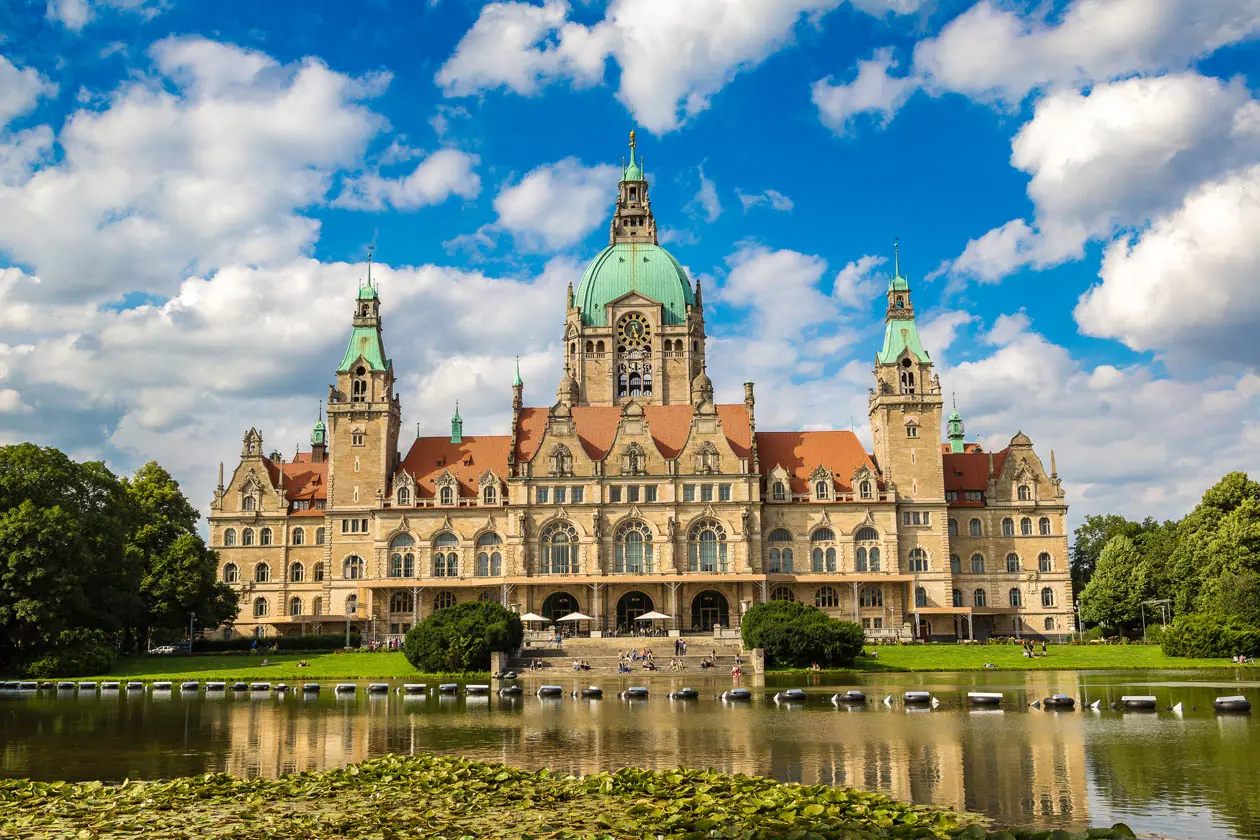
New Town Hall of Hanover. Photo: Copyright © Sisterscom / Depositphotos
Exiting the town hall, one can take a stroll along the "Sculpture Mile" between Leibnizufer and Brühlstrasse to admire the voluminous sculptures "Nana" by artist Niki de Saint Phalle, one of Hanover's main attractions. Art enthusiasts can follow the "Sculpture Mile" from the Nanas to Königsworther Platz, where outdoor installations by renowned artists like Erich Hauser and John Henry can be found. During weekends, the Sculpture Mile also hosts Germany's oldest flea market.
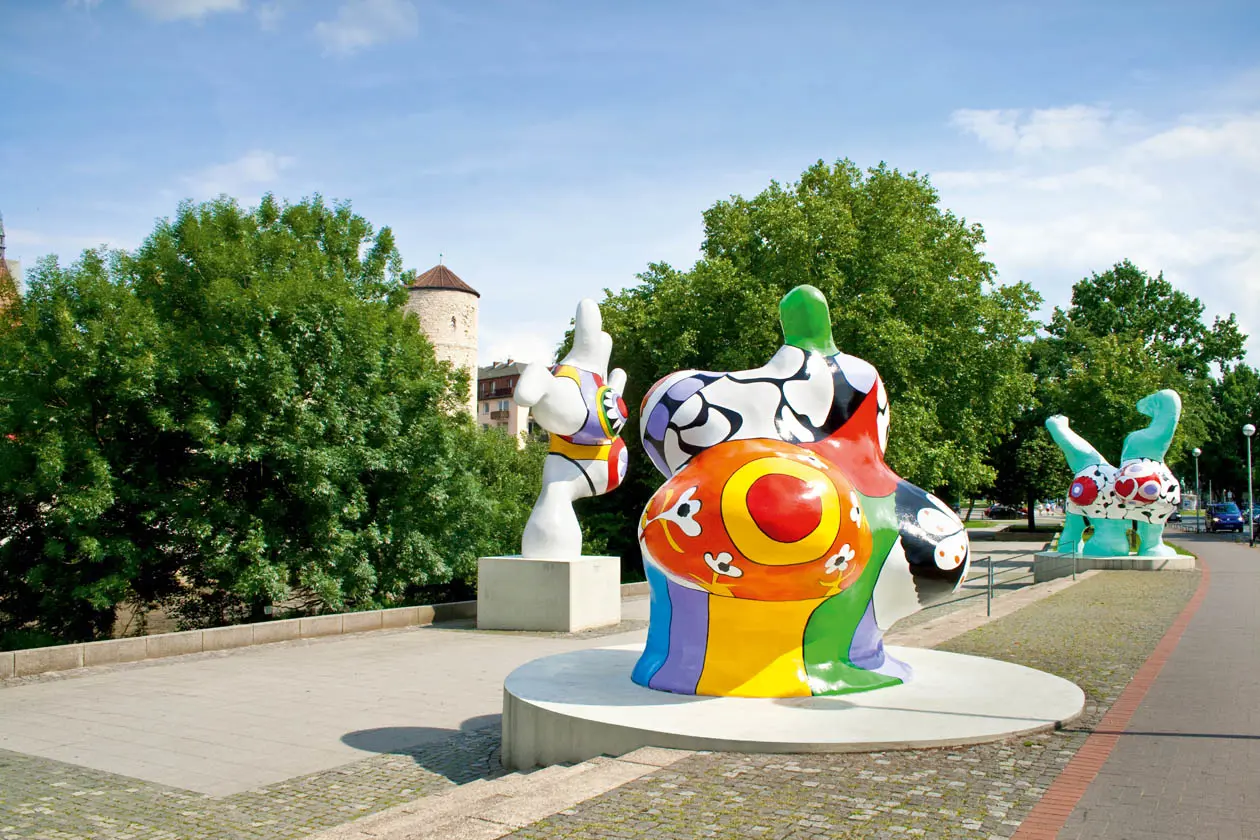
"Nana" by Königsworther Platz. Photo: Copyright © Hannover Marketing & Tourismus GmbH
Among Hanover's neoclassical buildings, the Opera House stands out, built from 1845 to 1852 based on a design by Laves. Originally serving as a royal theater, it was damaged during World War II and reconstructed in 1948. The new opera house features a classical style with two large wings and a terrace adorned with statues of poets and composers.

Opera House of Hannover. Photo: Copyright © Sisterscom / Depositphotos
Another attraction in Hanover is the Castle on the Leine River, dating back to the 12th century, now housing the parliament of the Lower Saxony government. Until 1553, it was a Franciscan convent, and in 1636, it became the residence of the Duke of Calenberg. In the 19th century, it was rebuilt by Hanover architect Laves and was destroyed by fire in 1943, later reconstructed.
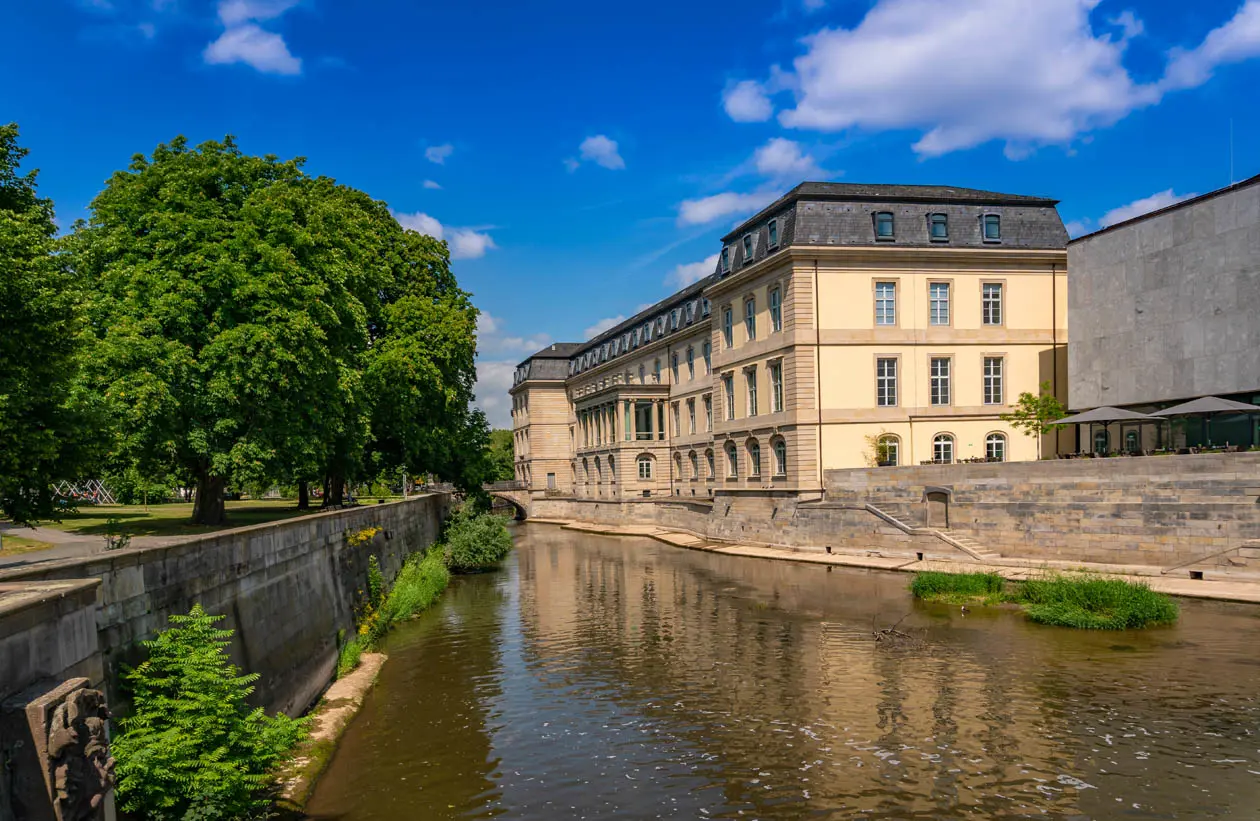
The castle on the river Leine in Hanover. Photo: Copyright © Hannover Marketing & Tourismus GmbH
Over the centuries, Hanover has developed from the old town on the banks of the Leine River, between the Aegidientor Gate to the West and the Steintor Gate to the East, to the central station built in the 19th century. Beyond the station and across Ernst-August-Platz lies the heart of the city, Kröpcke Square with the historic Kröpcke clock, featuring a luminous sculpture, a symbol of Hanover since 2015. Here, there is a pedestrian zone ideal for strolling, stopping at bars and restaurants, or shopping on Bahnhofstrasse (with Niki de Saint Phalle's Promenade) and Georgstrasse with elegant shops and exclusive boutiques right in front of the Opera House, perfect for a "Schorsenbummel," the historic walk along the avenue.
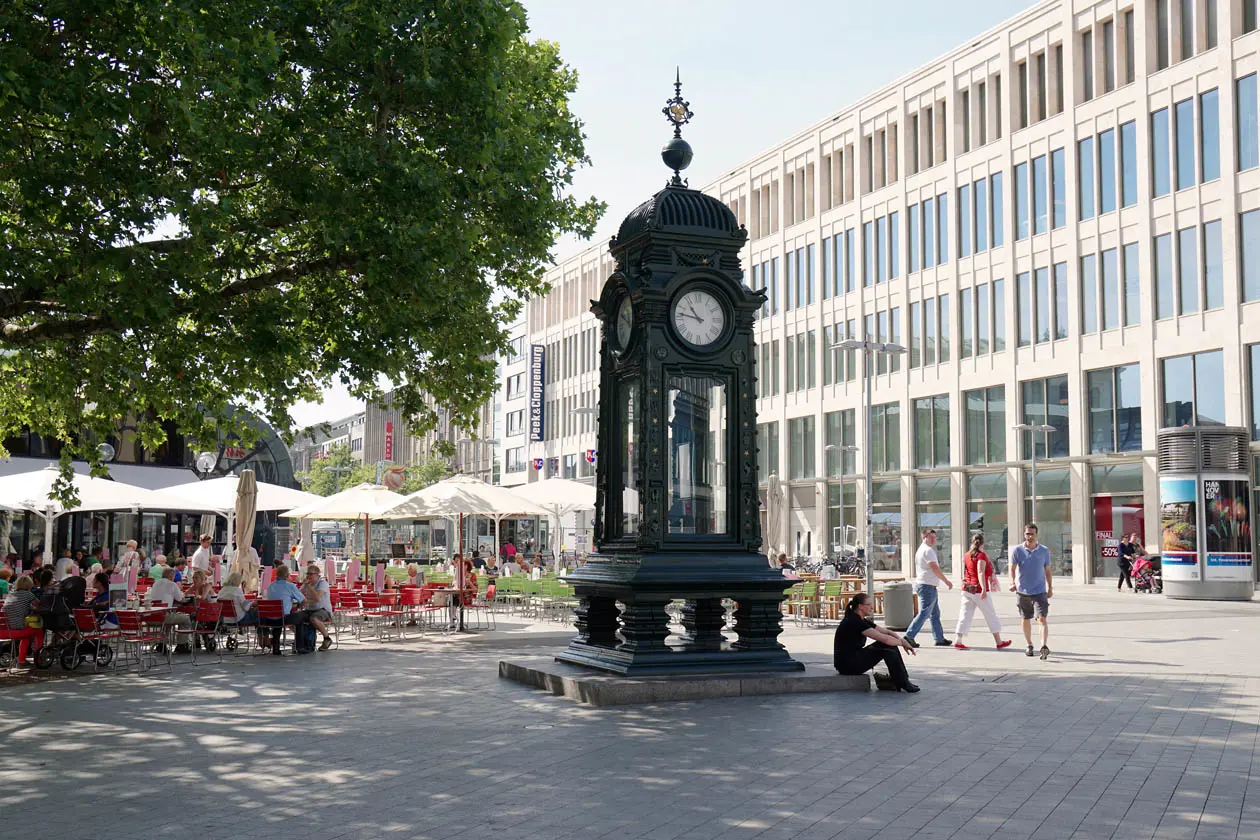
Piazza Kröpcke Place in Hanover. Photo: Copyright © Sisterscom / Depositphotos
For those interested in delving into the city's history and art, the Hanover Museums offer further exploration. The Sprengel Museum of Hannover is one of the most important museums for 20th and 21st-century art, while other museums dedicated to contemporary art include the Kestnergesellschaft and Kunstverein Hannover.
Ideal for families is the Niedersächsische Landesmuseum Hannover (Lower Saxony State Museum), offering a collection of archaeological artifacts, ethnology, and natural sciences.
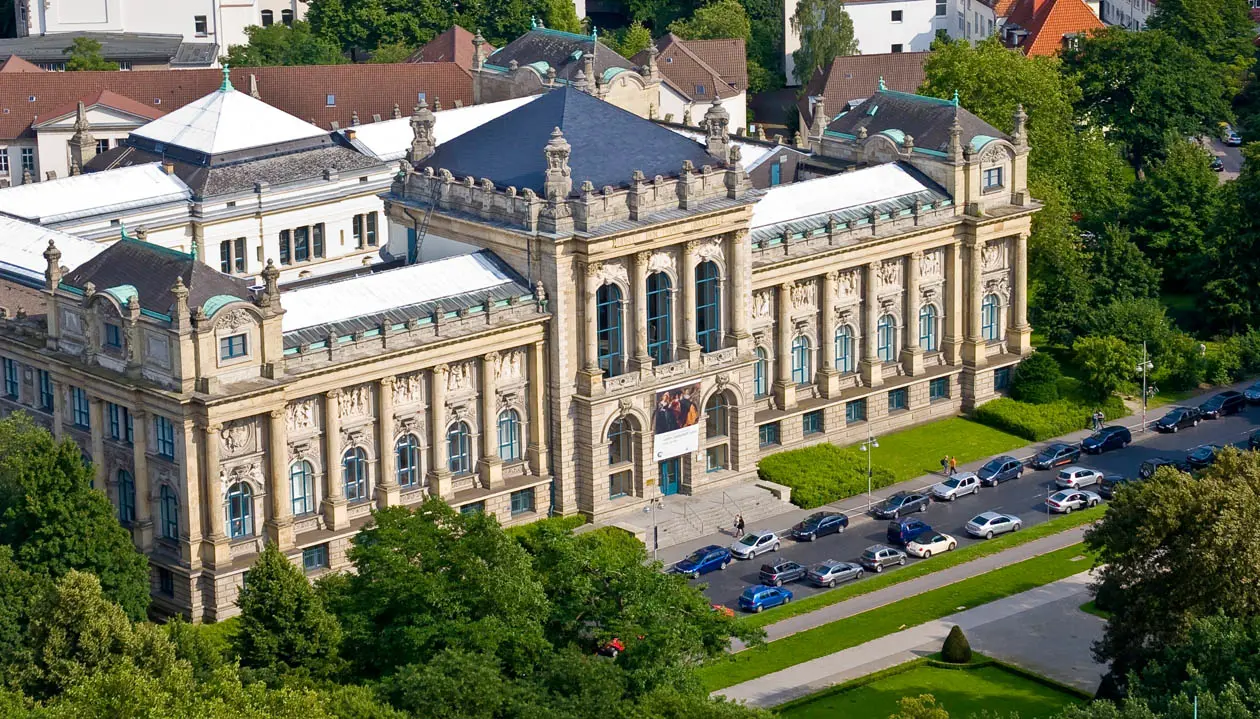
Niedersächsische Landesmuseum of Hanover. Photo: Copyright © Sisterscom / Depositphotos
Another family-friendly museum is the German Museum of Caricature and Graphic Art Wilhelm Busch. Additionally, one can explore the works of the August Kestner Museum spanning from antiquity to the present day or the Historisches Museum (Historical Museum) illustrating regional and city history. The Museum Schloss Herrenhausen (Herrenhausen Castle Museum) houses treasures from the Baroque era and the Royal Gardens of Herrenhausen complex. Aviation enthusiasts can visit the exhibition at Hannover Airport or, in the Hannover Region in Laatzen (13 km from Hanover), explore the Luftfahrtmuseum, another aviation museum.
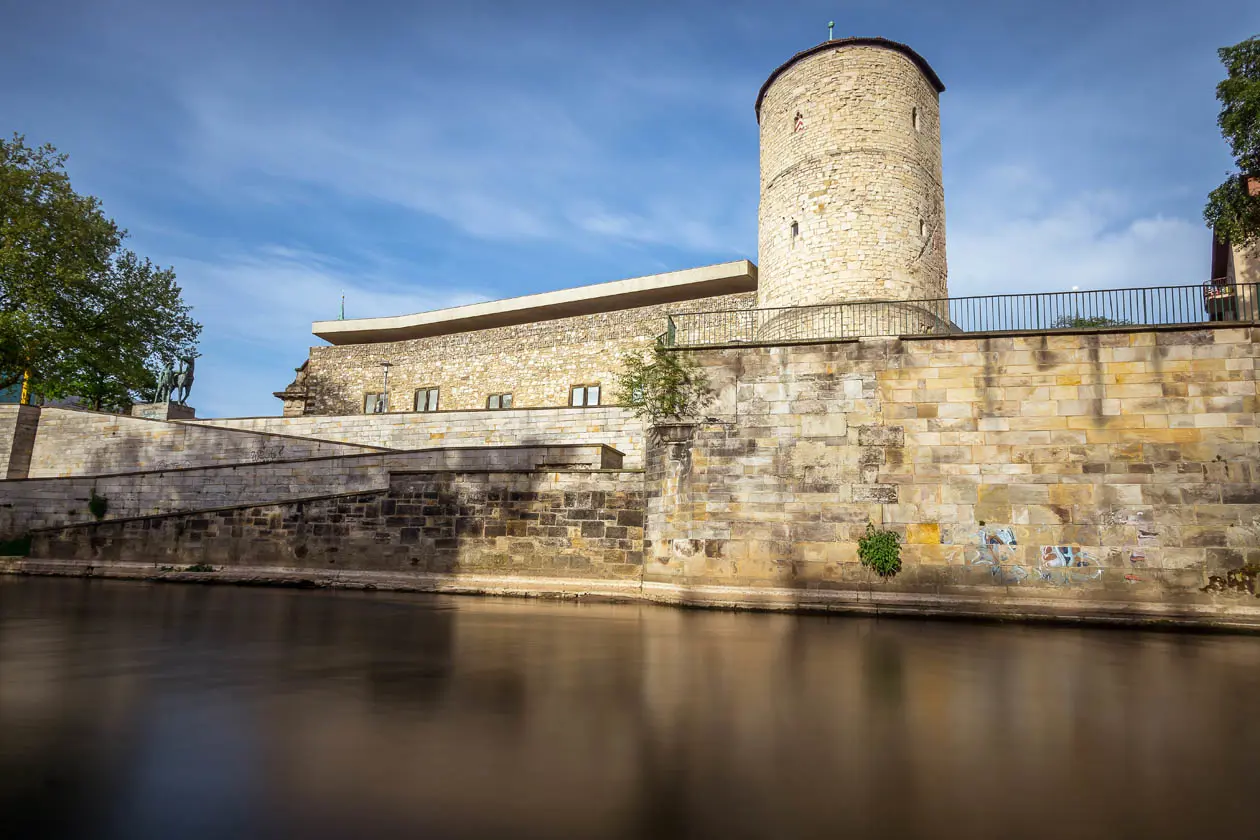
Historisches Museum of Hanover. Photo: Copyright © Sisterscom / Depositphotos
For a city break surrounded by nature, one can visit the Herrenhausen Gardens, home to the Great Garden, one of Europe's best-preserved and most important Baroque gardens, where summer events and open-air theater performances take place, ideal for strolling among gardens, fountains, grottos, and waterfalls. Here, one also finds Herrenhausen Palace with its gardens, housing a congress center and a museum. Visitors can also explore the Berggarten Botanical Garden (Mountain Garden) featuring plants, cacti, flowers, and Europe's largest collection of orchids.
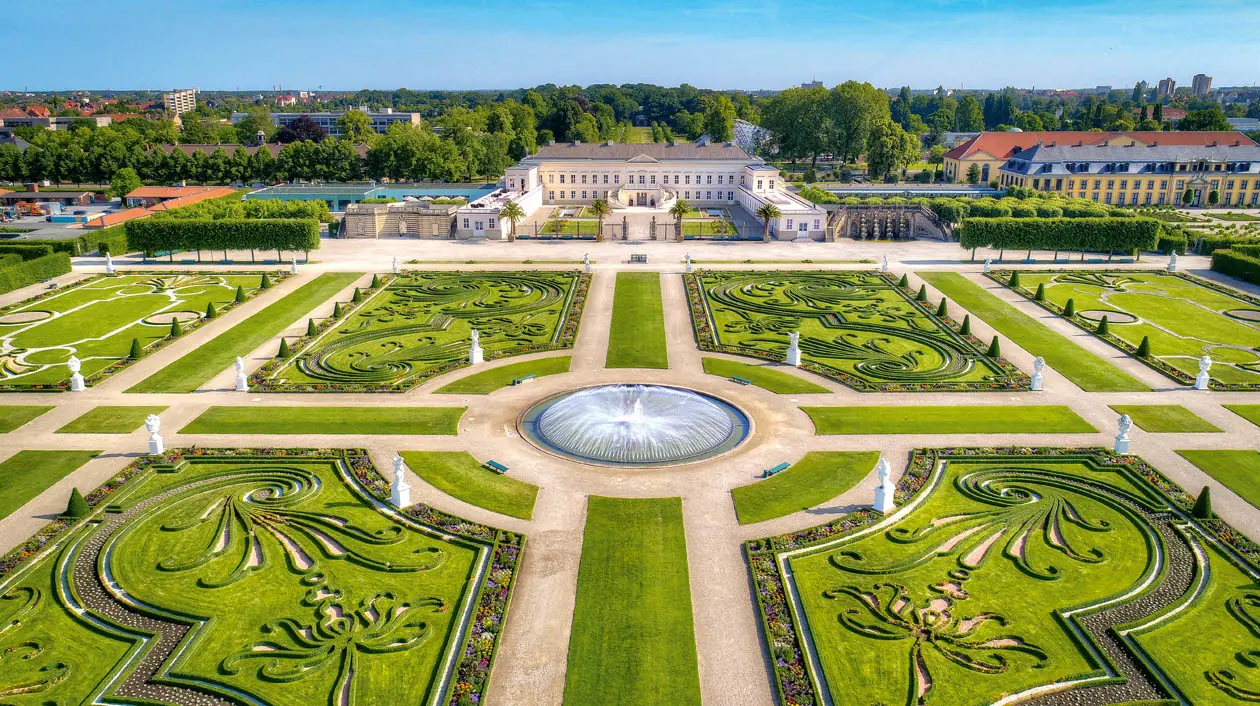
The Royal Gardens of Herrenhausen in Hanover. Photo: Copyright © Hannover Marketing & Tourismus GmbH
In the city center, you'll also find Lake Maschsee, perfect for jogging, leisurely walks, outdoor activities, and water sports such as yachting, canoeing, and pedal boating. During summer, you can join the Maschsee Lake Festival with concerts, water sports events, dances, and culinary tastings. Along the lake's shores stand the Sprengel Museum of Hanover and Maschpark.
Another attraction, especially beloved by families with young children, is Hanover's Adventure Zoo, offering the chance to admire exotic landscapes and embark on a safari amidst over two thousand animals including flamingos, giraffes, antelopes, rhinoceroses, zebras, hippos, lions, gorillas, elephants, and many more.
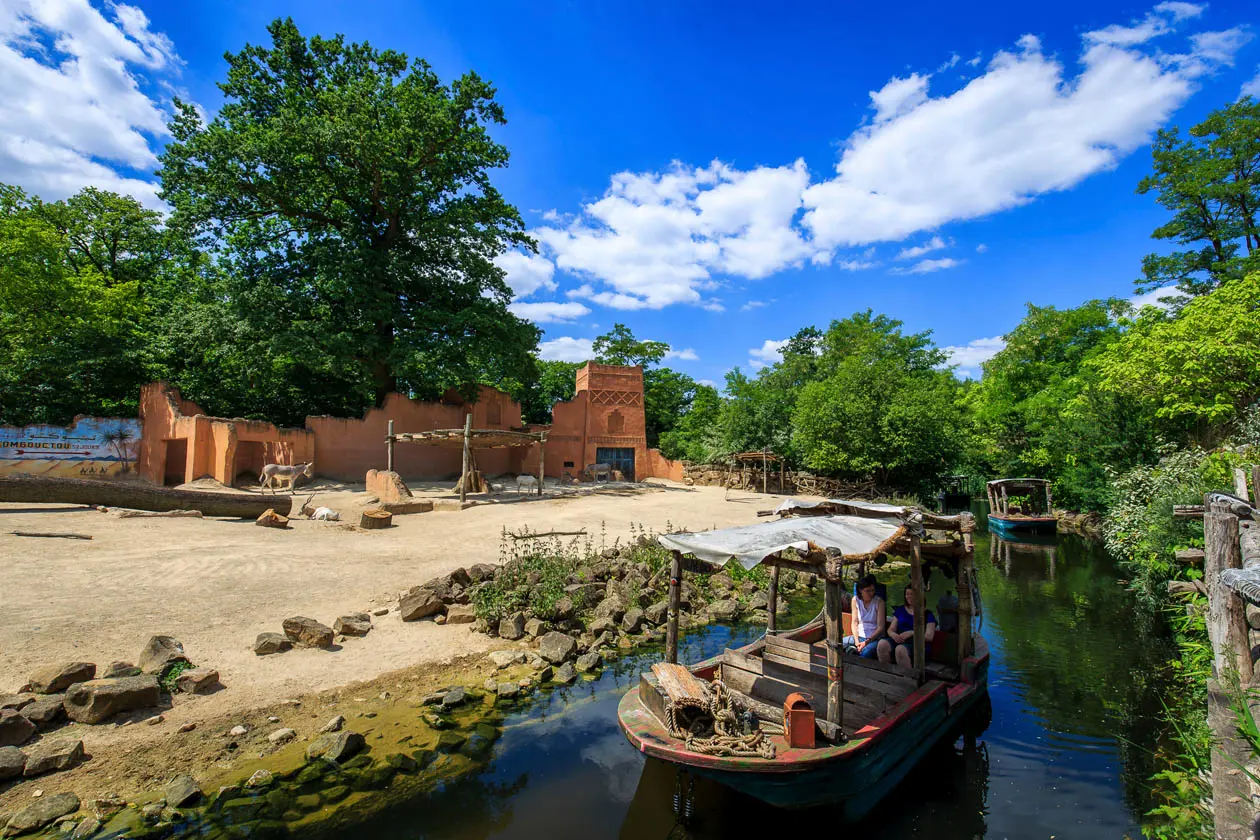
Hanover's Adventure Zoo. Photo: Copyright © Hannover Marketing & Tourismus GmbH
To complete your visit to the city, delve into its culinary world by savoring dishes at numerous restaurants, taverns, gourmet eateries, bars, breweries, or at the city's covered market, where you can shop or enjoy a ready-made dish or snack.
Among Hanover's most famous culinary delights, you must try the asparagus from Burgdorf, smoked eel from Lake Steinhuder Meer, the typical Hannoversche Bouillonwurst sausage, Calenberger Pfannenschlag (minced meat with cereal grains), Gersterbrot (traditional Hannover bread), Welfenspeise (a "Welf pudding" dessert with vanilla cream, milk, and cream of wine), and Güse's artisanal chocolates.

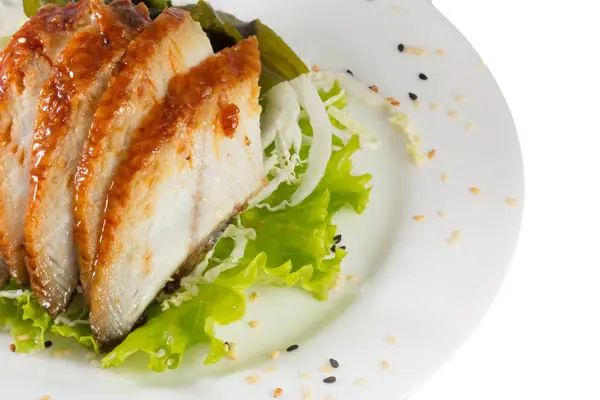

For beverages, there's the specialty Lüttje Lage, prepared with beer and cereal aquavit, traditionally consumed from two glasses simultaneously. In Hanover, drinking beer is a must, and you can still find ancient breweries like Gilde Brauerei and Herrenhäuser offering unique beers to taste on-site or purchase as typical souvenirs.
Text by Nicole Villa
Avion Tourism Magazine
Photos: Copyright © Sisterscom.com / Depositphotos
Photos: Copyright © Hannover Marketing & Tourismus GmbH
Tourism Board
www.visit-hannover.com - www.germany.travel
Partnership with Booking.com
Where to sleep in Hanover
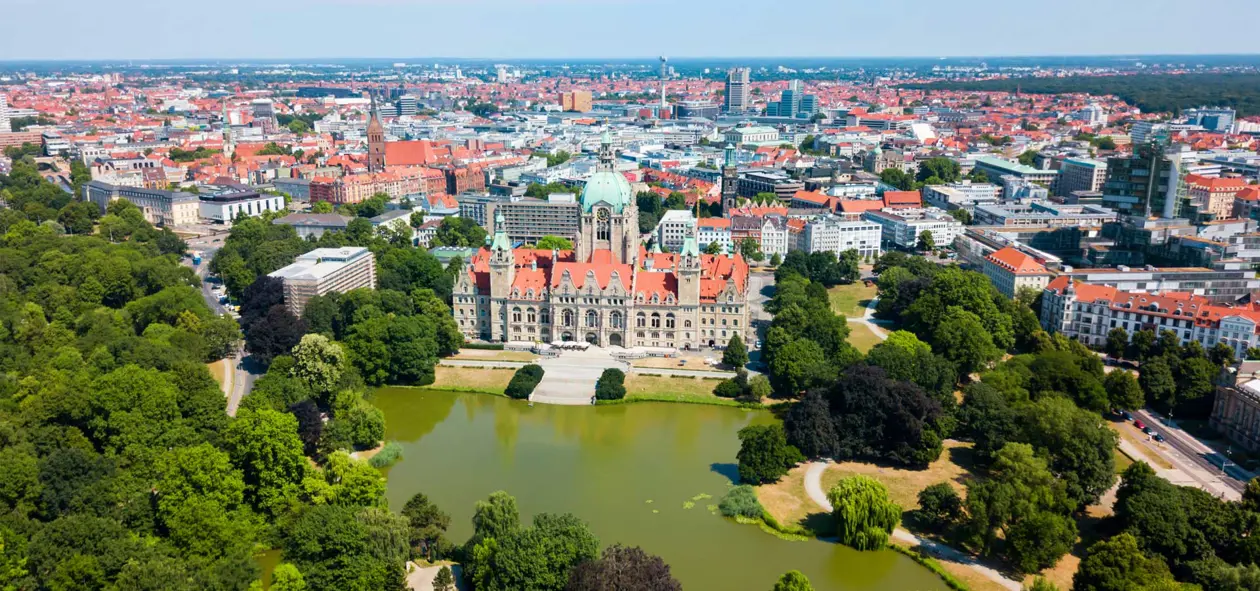
Hanover. Photo: Copyright © Sisterscom.com / Depositphotos
Hanover offers endless possibilities for staying in facilities equipped with the best services.
To find the ideal hotel and the best offers you can do a search for the stars but also for districts or landmarks.
STARS
Hotels for stars, differentiated by type of services:
HOUSES, RESORTS, B&Bs
Stays in houses, resorts, B&Bs and hostels:
LANDMARKS
Hotel in tourist areas
LANDMARKS
Hotel in tourist areas
REGION
Hotels in the region
AIRPORT
Hotels near the airport
WHERE TO GO IN HANOVER
Tourist attractions of Hanover

Herrenhäuser Gärten (Herrenhausen Gardens)
The Herrenhausen Gardens in Hanover are a prime example of European garden art and were awarded the European Garden Prize in 2015. The Great Garden, Europe's most important Baroque garden, was created in 1666 by the Duke of Calenberg, Johann Friedrich. In the late 17th century, Sophie von der Pfalz, the Electress of Hannover, redesigned the garden in the French style, creating a masterpiece of Baroque art with fountains, a maze, an open-air theater, a waterfall, a castle, a gallery, and an orangery. The grotto, built in the 18th century, was decorated in 2002 by the artist Niki de Saint Phalle with pebbles, glass, and mirrors, transforming it into a work of art. The Great Garden is a significant attraction in Hanover, celebrated with garden parties, theatrical performances, and fireworks in the summer.
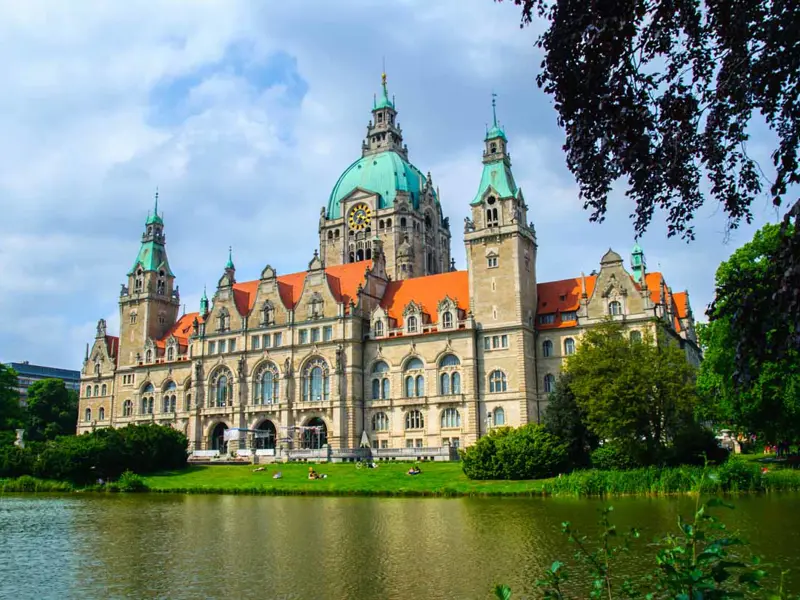
Neues Rathaus (New Town Hall) of Hanover
The New Town Hall of Hanover is of imposing dimensions and was inaugurated in 1913. It was constructed with 6026 beech wood piles and designed by architects Eggert and Halmhuber. It serves as the residence of the mayor of Hanover, hosting distinguished guests and art exhibitions. Notable features include the furnishings and the "Hodler Hall" with frescoes by the Swiss painter Ferdinand Hodler, the "Mosaic Hall" adorned with mosaics, and the "Ladies Hall" with beautiful decor. The tip of the New Town Hall's dome, 97.73 meters high, is reached by a parabolic elevator ascending 43 meters to the observation point with views of the city. The town hall also houses the Gartensaal restaurant overlooking the lake.
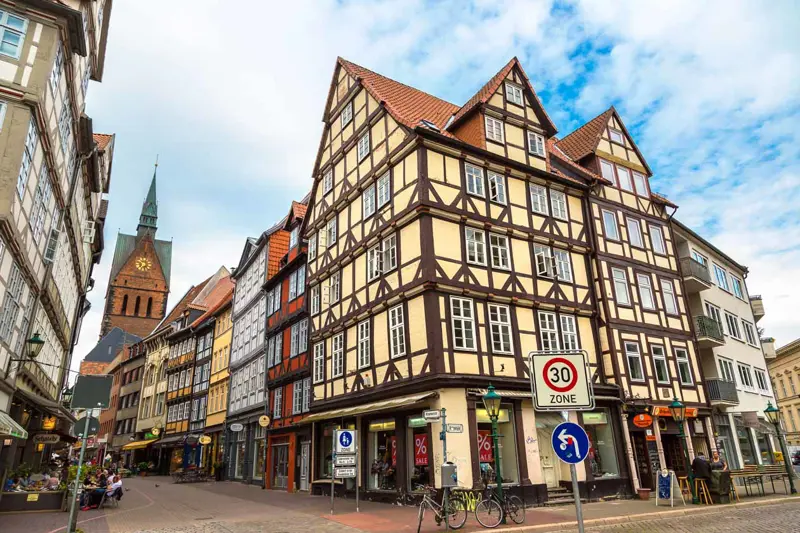
Altstadt (Old Town) of Hanover
The old town of Hanover is characterized by narrow alleys and medieval half-timbered houses. After World War II, forty half-timbered houses remained, twelve of which are located in Knochenhauerstrasse, Kramerstrasse, and Burgstrasse. The oldest half-timbered house is located in Burgstrasse with a Renaissance facade from 1566. Nearby is the Kreuzkirche, Hanover's oldest church, built in 1333 with the altar designed by Lucas Cranach the Elder. Opposite the City Museum is the Leibniz House, while on the river Leine, you can admire the 12th-century castle, which serves as the seat of the government of Lower Saxony.
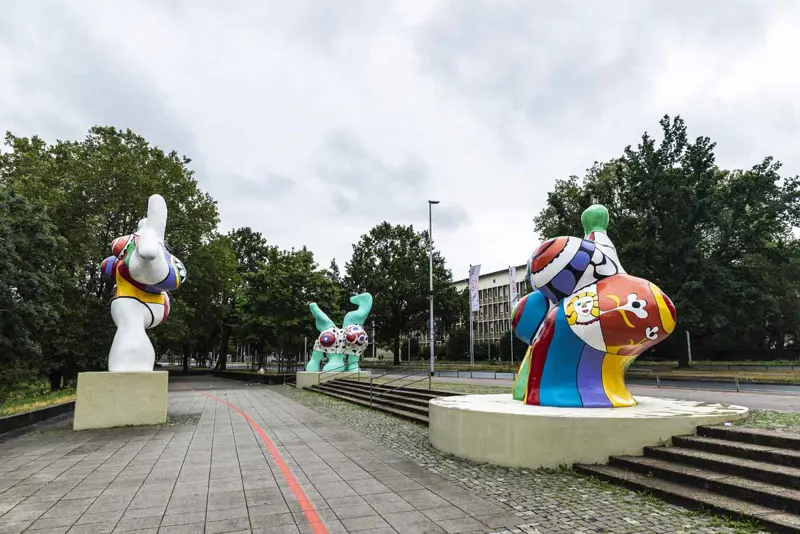
Nanas of Hanover
Sophie, Charlotte, and Caroline are the names of the Nanas of Hanover, sculptures by the French artist Niki de Saint Phalle (1930-2002) erected in 1972, two years after the creation of the flea market on the banks of the river Leine. The colorful Pop Art statues are located at the beginning of the Sculpture Mile. Other works by the artist can be found in the Grotto of the Great Garden of Herrenhausen, where she designed three rooms. Every Saturday around the Nanas, the oldest flea market in Germany is held, from dawn to late afternoon, a must-visit for finding vintage bargains or engaging in interesting exchanges.
Museums in Hanover

Aviation Museum at Hannover Airport
It is an experiential aviation museum in the Hannover Airport Plaza, on the departures level between terminals A and B. It offers a narrative on the history of flight from early experiments and a glimpse into airport operations. Visitors have the opportunity to "fly" an Airbus A320 with a flight simulator for those dreaming of becoming a pilot for a day. Children can obtain a "pilot's license" and visit the Kid's Airport, and furthermore, on the panoramic terrace, they can dress up as pilots and air traffic controllers.
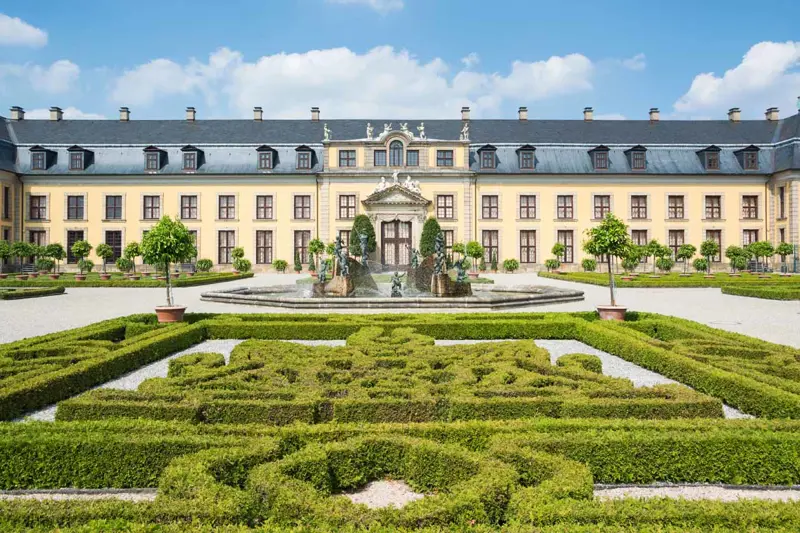
Herrenhausen Palace Museum
At Herrenhausen, Gottfried Wilhelm Leibniz conceived innovative thoughts expressed in dialogue with Electress Sophia and her daughter Sophia Charlotte. His reflections reflect the knowledge of his time but transcend the ages. In 2009, the capital of the State of Hanover and the Volkswagen Foundation reconstructed the summer residence of the Guelfs, destroyed during World War II. Herrenhausen Palace is now used as a conference center and museum, and the Herrenhausen Gardens are a true architectural masterpiece.
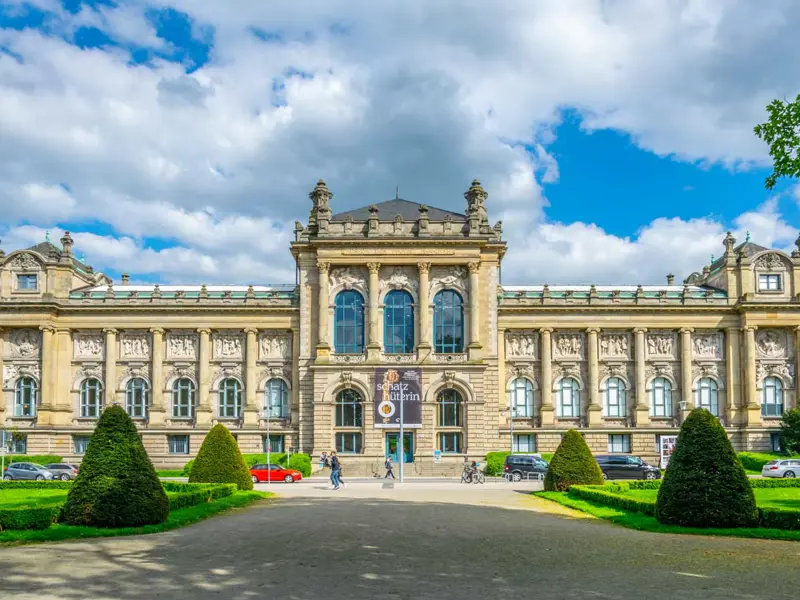
State Museum of Hanover
The Hanover State Museum houses artworks from the 14th to the 20th century, as well as artifacts from archaeology, ethnology, and natural history. It offers an exhibition of five collections and is considered the largest state museum in Lower Saxony. Visitors can admire paintings by Lucas Cranach, Peter Paul Rubens, and Nicolas Poussin. Other collections embrace different Worlds: the Worlds of Nature, the Worlds of Man, and the Worlds of Art.
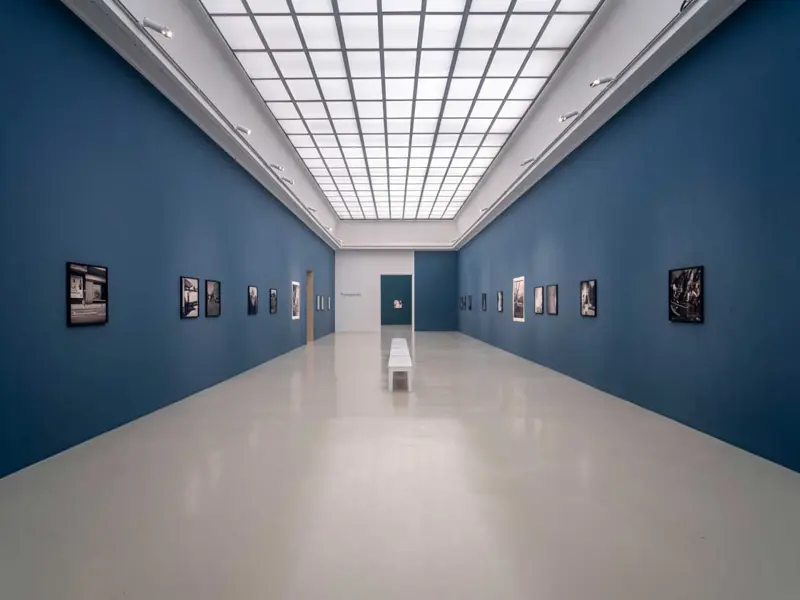
Akinbode Akinbiyi, Sometimes to be lost is to be found, installation view Passageways, Kunstverein Hannover, 2023, photo: © Mathias Voelzke.
Kunstverein Hannover
The Kunstverein Hannover, founded in 1832, is one of the oldest art associations in Germany. Since the 19th century, it has been located in the Künstlerhaus, in the city center, with spacious halls and unique architecture. It has hosted exhibitions by Marina Abramovic, Gerhard Merz, David Reed, Daniel Buren, Miriam Cahn, Gregory Crewdson, Helen Frankenthaler, Bridget Riley, Niki de Saint Phalle, Kara Walker, Franz Erhard Walther, and Piero Manzoni.

Museum WIlhelm Busch. Photo for editorial use only: Copyright © Martin Kirchner
Wilhelm Busch Museum
The Wilhelm Busch Museum, also known as the German Museum of Caricature and Drawing, is located in the city center in the Georgengarten. It offers a permanent exhibition on the art of caricature with works by caricaturists from different eras. The Wilhelm Busch Caricature Museum also hosts temporary exhibitions on the caricature art of various artists. Among the exhibitions, visitors can admire works by humorous and satirical artists such as Wilhelm Busch, Loriot, Jean-Jacques Sempé, William Hogarth, Marie Marcks, Friedrich Karl Waechter, and children's book illustrators such as Axel Scheffler and Eric Carle.
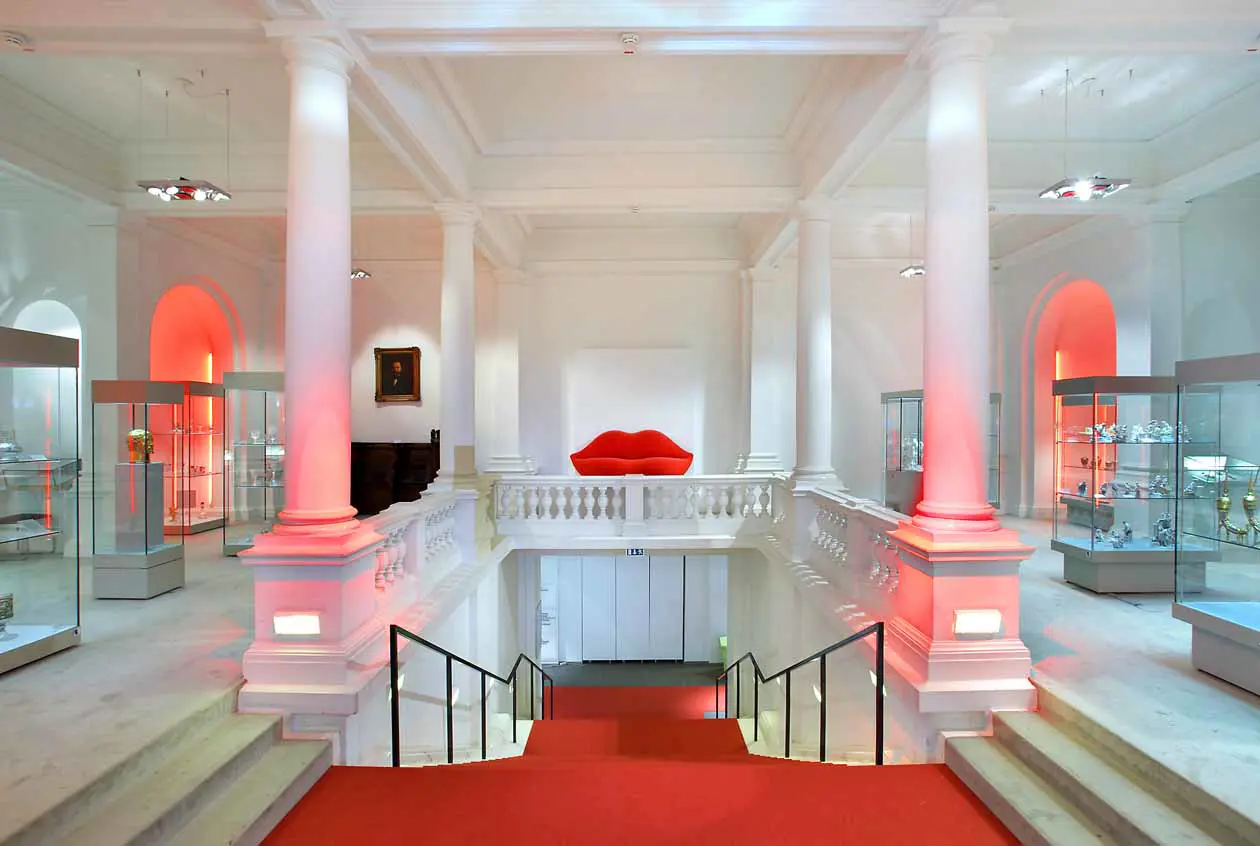
Museum August Kestner. Photo for editorial use only: Copyright © Museum August Kestner
August Kestner Museum
The August Kestner Museum is Hanover's oldest museum and still retains its original entrance facade dating back to 1889. The museum is located in the heart of Hanover, next to the New Town Hall, and exhibits applied art works that tell 6,000 years of history. The museum is named after August Kestner, a collector of ancient artworks. Visitors can admire various collections ranging from Ancient and Egyptian Civilization to Applied Arts, as well as a focus on design and a collection of coins and medals from Northern Germany.
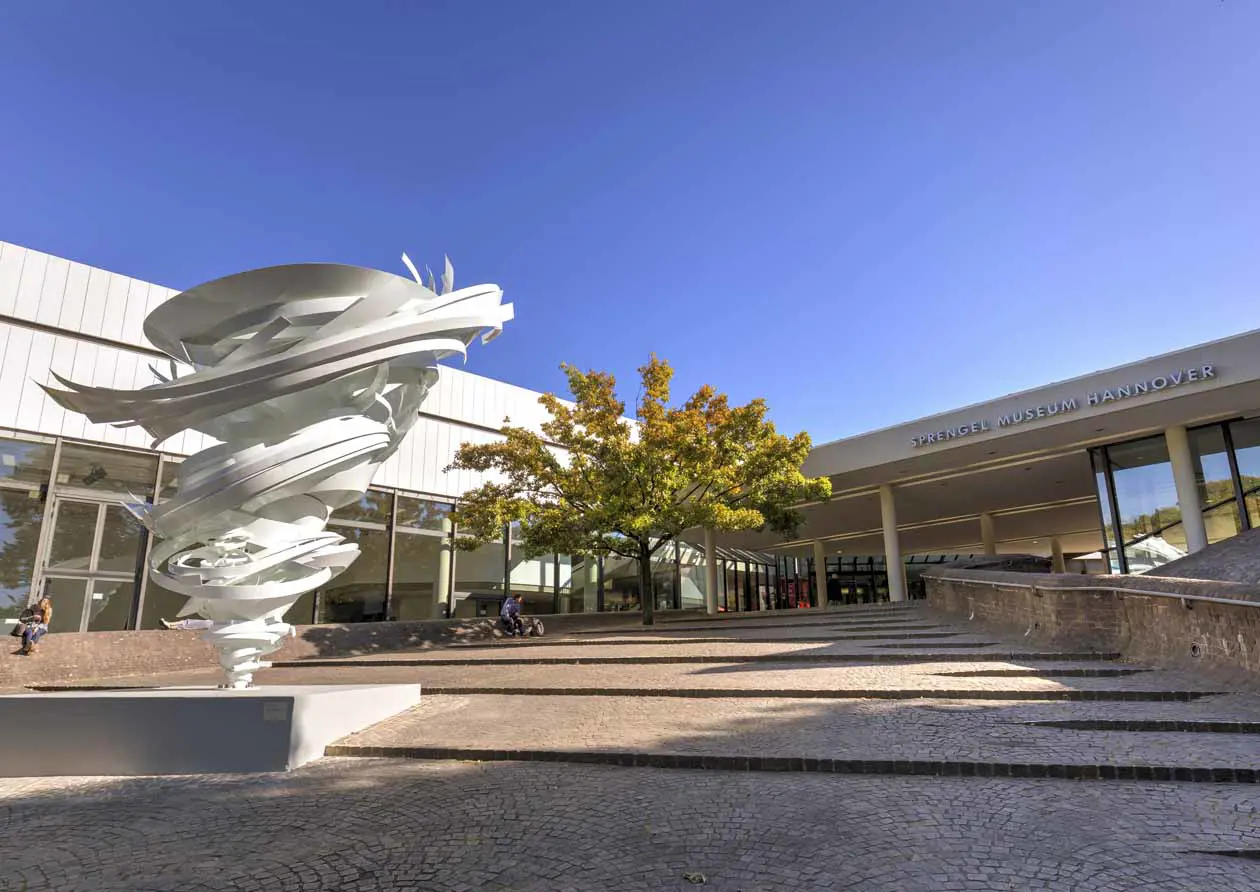
Sprengel Museum Hannvoer. Photo for editorial use only: Copyright © HMTG
Sprengel Museum
The prestigious Sprengel Museum in Hanover exhibits works ranging from German Expressionism to French Modernism in 20th and 21st-century art. The collection features works of painting, sculpture, photography, prints, and installations by internationally renowned artists such as Kandinsky, Picasso, Klee, and Nolde. The Sprengel Museum is one of Hanover's main cultural attractions that fascinates art enthusiasts.
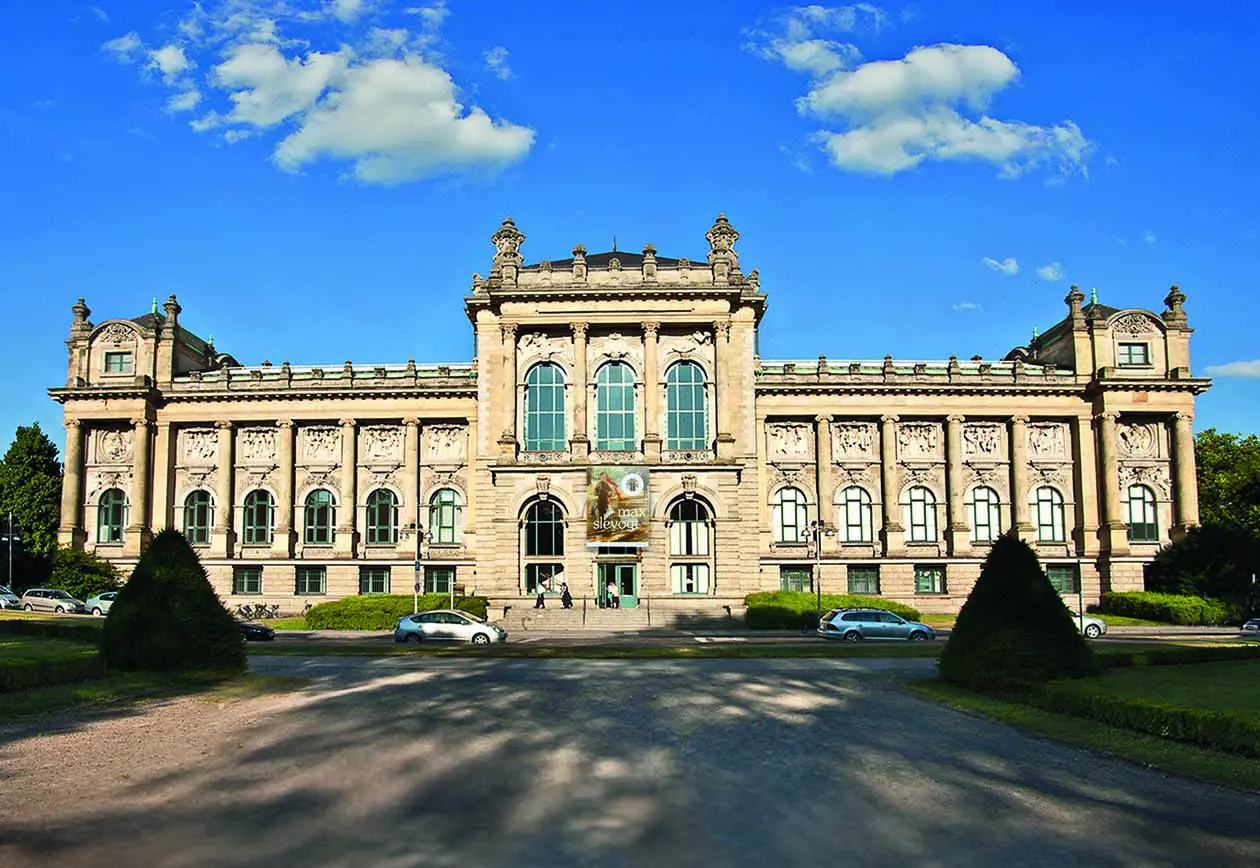
Landemusem. Photo for editorial use only: Copyright © Landesmuseum Hannover
Historical Museum of Hanover
The Historical Museum of Hanover, established in 1903, offers exhibitions on the city's history, regional history, and folklore of Lower Saxony. The collections span from the Middle Ages to contemporary history. Additionally, the museum serves as a historical photographic archive of the city of Hanover, from 1850 to the present day. It houses a portrait of Gottfried Wilhelm Leibniz, along with his personal belongings and an illuminated quote on the side of the Museum zur Leine.
Excursions in Hanover
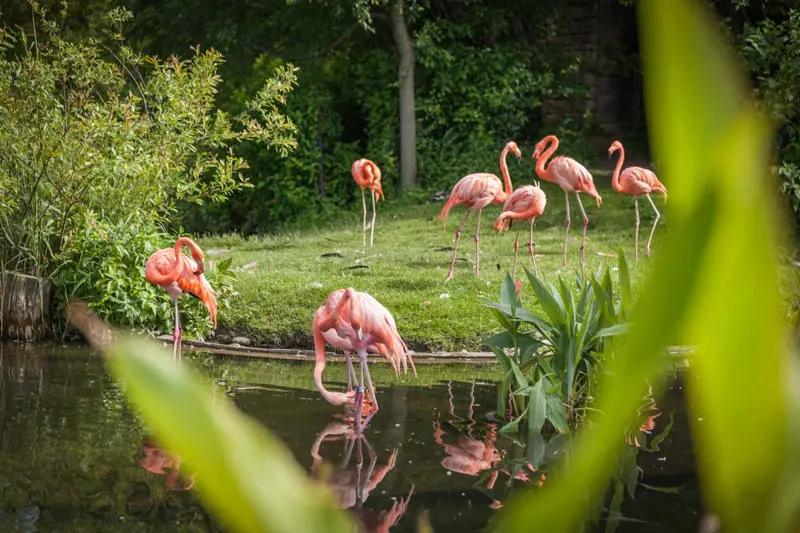
Hanover Adventure Zoo
At Hanover Adventure Zoo, visitors discover animals in enclosures modeled after their natural habitats. In Captain Henry's Underwaterworld at Yukon Bay, one can find polar bears, penguins, and seals. The zoo allows exploration of realistic landscapes ranging from the African savannah to the South American rainforest, offering a unique opportunity for learning and discovery. It provides a one-of-a-kind experience for visitors of all ages. Located in the heart of the city, it is one of the most popular destinations for nature enthusiasts, providing encounters with various species from around the world.
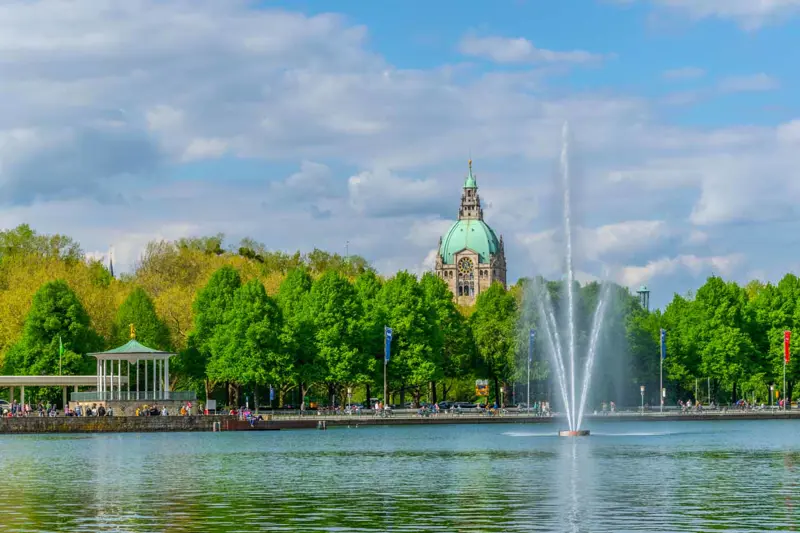
Maschsee Lake in Hanover
Maschsee Lake in Hanover is an artificial lake created in 1936 on a floodplain of the River Leine and is a recreational area near the city with facilities for water sports. It stretches 2.4 kilometers over an area of 78 hectares and is the largest body of water in the capital of Lower Saxony, an ideal location for jogging, skating, cycling, walking, or stopping at a lakeside restaurant. Rowboats, pedal boats for rent, and boats navigate the lake. Regattas and the Maschsee Festival, a major summer event around the lake, are held here.
Partnership with GetYourGuide
Discover all the tours
News & Useful info
You might be interested in
Other destinations
Airports nearby Hanover


